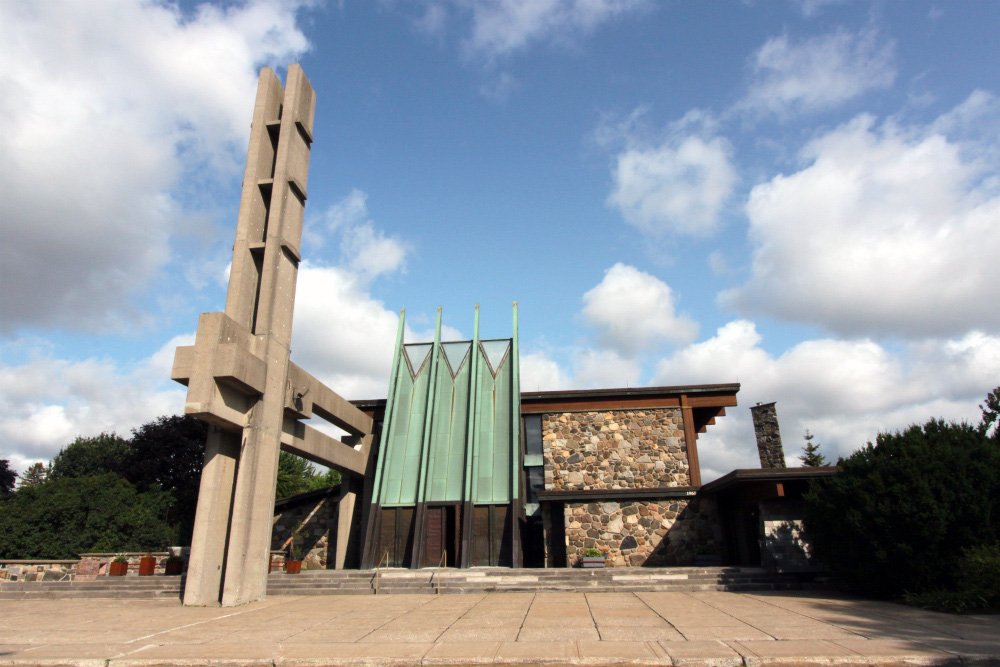The Quebec Ministry of Culture and Communications has announced that Église Saint-Maurice-de-Duvernay, a cutting-edge work of modern religious architecture built in Laval during Quebec’s “Quiet Revolution” in the early 1960s, has been granted a special “heritage” status by the province, along with furnishings inside the church.
Built in 1961-62, the church was designed by Quebec-based architect Roger D’Astous, who did some of his architectural studies under the supervision of the influential American architect Frank Lloyd Wright.
D’Astous, who designed a good number of other modern-style churches in Quebec – as well as major projects like the Château Champlain hotel and the Olympic Village for the 1976 Montreal Games – is recognized today for his key role in introducing modern architecture to Quebec.

Some of the church’s architecture – including a massive supporting beam shaped as a crucifix, which extends from inside out onto an exterior plaza – is considered to be unique in the design of places of worship in Quebec.
Dramatic stained-glass windows inside were created by Automatist Quebec painter Jean-Paul Mousseau.
The church’s daring architecture is considered by some to be a historic metaphor for the social changes which were sweeping Quebec after World War II, facilitated by the modern perspective brought about in the Roman Catholic Church following the Vatican II ecumenical council.
“Saint-Maurice-de-Duvernay Church is much more than just a building,” Sainte-Rose MNA Christopher Skeete, the Quebec cabinet minister responsible for the Laval region, said in a statement.
“It’s a powerful symbol of our history and of the evolution of architecture in Quebec,” he said.
“The heritage classification of Église Saint-Maurice-de-Duvernay by our government is good news for our riding of Laval-des-Rapides as well as the whole region of Laval,” added Laval-des-Rapides MNA Céline Haytayan.



